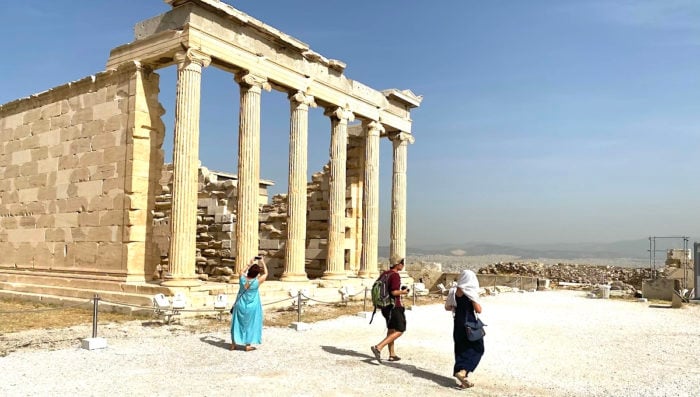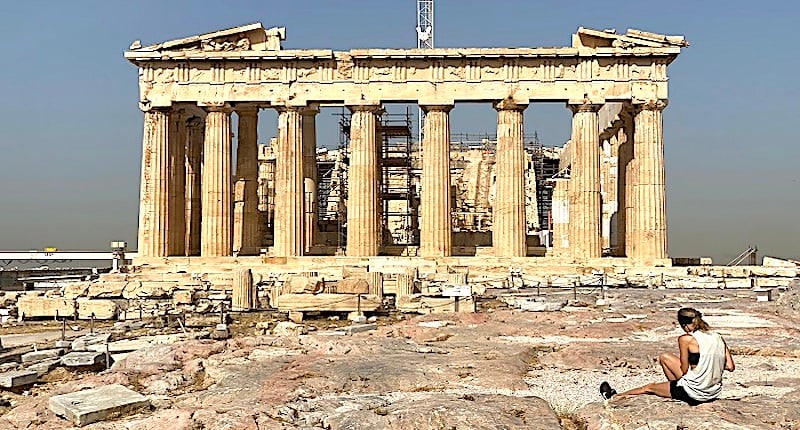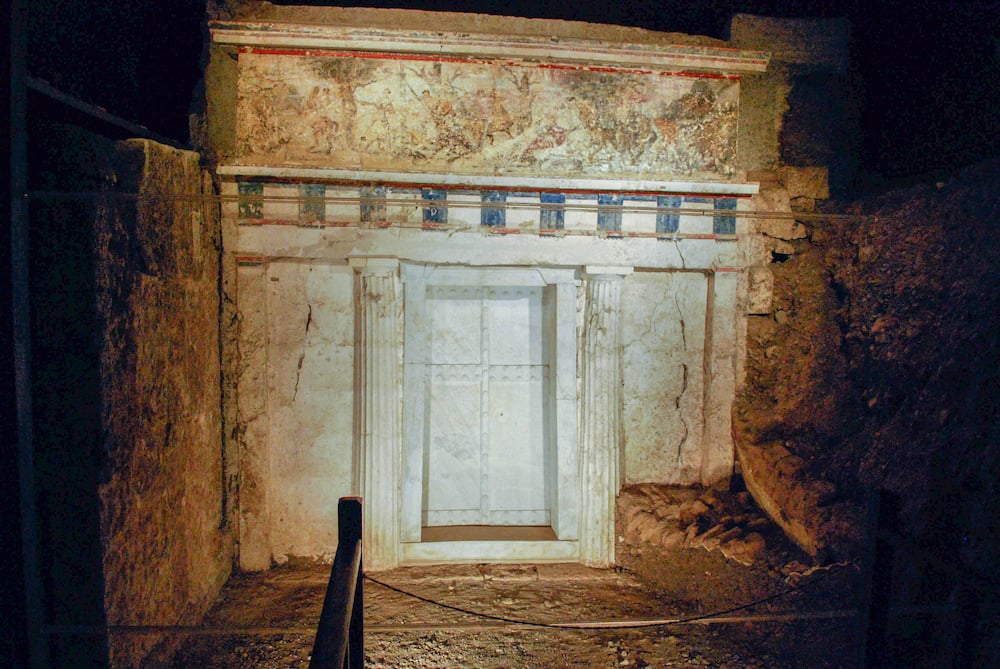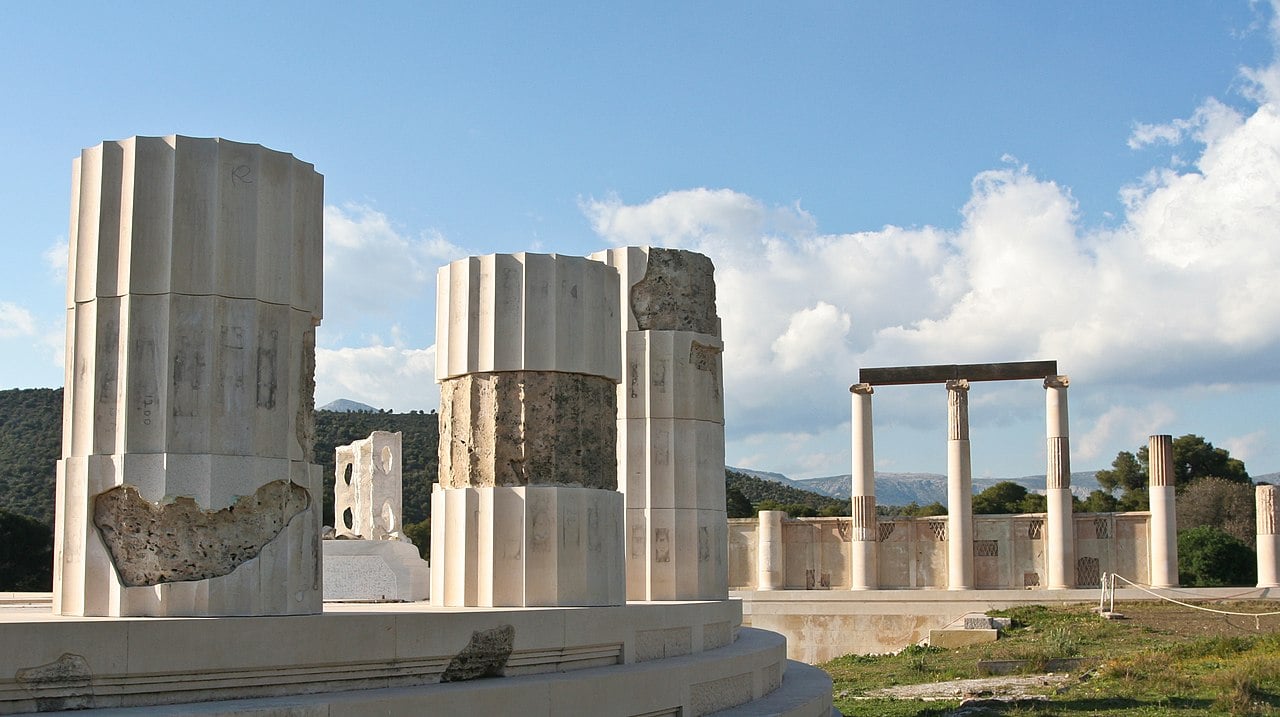
The physical presence of Greece’s glorious ancient history is still visible through the country’s countless archaeological sites, buildings, and monuments. It should not come as a surprise, then, that the country boasts a rich list of UNESCO World Heritage Sites.
Greece currently hosts 18 UNESCO World Heritage Sites, with 16 inscribed on the list for cultural heritage, while the other two — Meteora and Mount Athos — are included due to their exceptional natural landscape as well as their cultural significance.
The Acropolis was added as UNESCO World Heritage Site in 1987

A few of Greece’s UNESCO World Heritage Sites are located on the islands, while the majority of them are found on mainland Greece. This first site to be included on the list was the Temple of Apollo Epicurius, which was added in 1986.
The famous Temple of Apollo Epicurius, also referred to as Bassae, was dedicated to the god of healing and the sun. Dating back to the 5th century BC, it was erected on the mountains of Arcadia.
The Temple, which has the oldest Corinthian capital ever found, combines the Archaic with the Doric architecture styles.
The Acropolis was included in 1987 as an entire site that includes some of the greatest masterpieces of the classical period, such as the Parthenon, the Erechteion, the Propylaea, and the Temple of Athena Nike.
The so-called center of the world for the ancient Greeks, the archaeological site of Delphi, as well as the site of Mystras and its castle, dating back to 1249 AD, also are among the noted sites on the UNESCO list.
Olympia, home to the ancient Olympic Games, which first took place in 776 BC, and an important religious center in ancient Greece, is another UNESCO World Heritage Site which should not be missed by any traveler to Greece.
Vergina, capital of kingdom of Philip II

The city of Aigai, known today as Vergina, was the first capital of the ancient kingdom of Macedonia in northern Greece.
The site includes important royal monuments like the tomb of Philip 11, father of Alexander the Great, which was discovered in the ancient city in the ’70s in one of the most spectacular architectural finds in history.
This priceless archaeological site and the treasures found there were included on the list of UNESCO World Heritage Sites in 1996.
The archaeological sites of Mycenae and Tiryns are home to impressive remnants of the two cities which dominated the eastern Mediterranean from the 15th to the 12th century B.C.
Medieval city of Rhodes, Greece another UNESCO Must-See
Rhodes was declared a World Heritage City due to its Medieval castle and the citadel inside. According to experts, the castle of Rhodes is one of the most extensive castles in Europe; it is well-known as one of most beautiful castles in Greece.
Greek mythology says that the god Apollo was born on the small Cycladic island of Delos, in the center of the Aegean sea. For this reason, the Sanctuary of Apollo on Delos was one of the most important pilgrimage sites in antiquity.
This exceptional island of Delos, “The Island of the Gods” has been part of the UNESCO World Heritage List since 1990.
Three monasteries are also part of the list, including the Monastery of Daphni in Athens, Nea Moni of Chios, and Hosios Loukas in Phokida.
The old town of Corfu, added to the UNESCO list in 2007, features two imposing fortresses in its historical center, called the Old and the New Fortresses.
The oldest fort is located on an island, joining the city through a bridge that was once made of wood. In the past, high protective walls linked both fortresses, but they have since been destroyed.
The Early Christian and Byzantine Monuments of Thessaloniki have also been introduced in this impressive catalog of sites of cultural importance.
The UNESCO World Heritage Sites in the second-largest city in Greece are the Rotunda, the temple of Acheiropiitos and Saint Demetrius, the Latomou Monastery, the Church of Agia Sophia, and the Church of Our Lady Chalkeon, along with several other smaller churches, and the city’s Byzantine baths and ancient walls.
On the island of Samos, the ruins of the Pythagoreion, an ancient fortified port with Greek and Roman monuments and an aqueduct are part of UNESCO’s treasures, as well as the Heraion, the temple dedicated to Hera that was built in ancient times on the island.
Meteora and Mount Athos included as sites of both natural and cultural importance

The main monuments belonging to the Sanctuary of Asklepios in Epidaurus, particularly the theater — a masterpiece of Greek architecture — are also part of the distinguished list. The ancient temple complex was home to a healing center in ancient Greece.
Patmos, known as the island where St. John wrote the Book of Revelation, or the Apocalypse, is famous for its monastery and its connection to the apostle and saint.
The Chora or historic town center on the island of Patmos, together with the fortified Monastery of Saint John the Theologian and the Cave of the Apocalypse, are listed on the catalogue of important cultural sites and are a must-see for anyone visiting the island.
Phillippi is the most recent addition to the list. The remains of this walled city are located in northeastern Greece, on the ancient route that connected Europe to Asia, the Via Egnatia.
Founded in 356 BC by the Macedonian King Philip II, this city developed like a smaller version of ancient Rome. The vibrant Hellenistic city of Philip II was supplemented with Roman public buildings such as the Forum and a monumental terrace.
The remains of its basilicas are beautiful examples of the early establishment of Christianity in the area.
Meteora, as well as Mount Athos, are the two monuments introduced to the UNESCO list not only for their cultural meaning but also for the stunning natural characteristics of the landscapes that surround them.
The unique tectonic formations of Meteora, in Kalambaka, resemble another planet more than they do Earth. They are thought to date back 30 million years, when the sea covering the area started to recede.
Mount Athos, which is surrounded by wild forests and steep cliffs, can only be visited by men in possession of a special pass. The complex includes twenty Orthodox monasteries.




Comments
Post a Comment